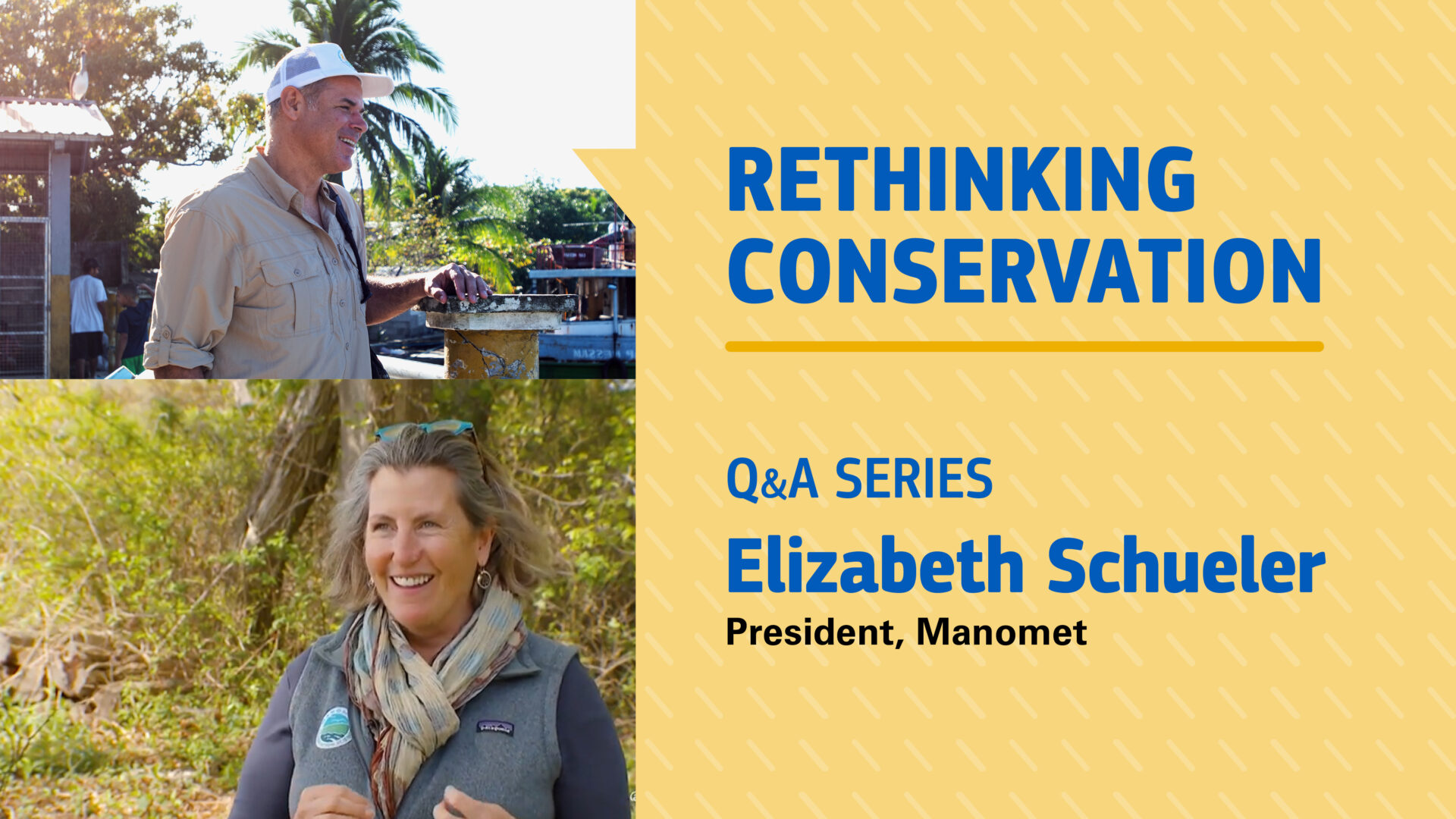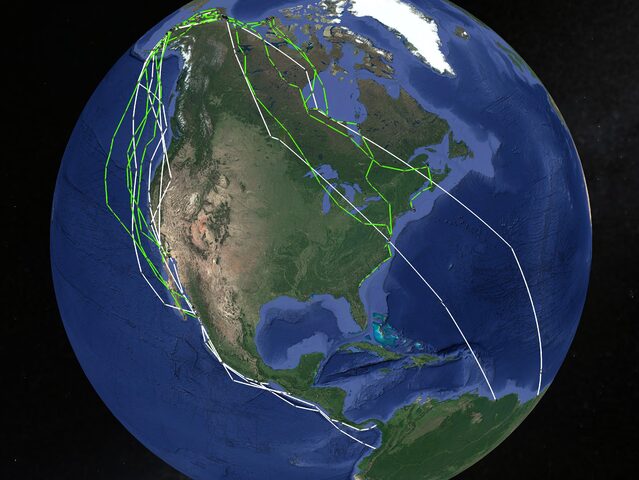
Conservation often gets framed as a race to “scale solutions.” Elizabeth (Lizzie) Schueler, Manomet President, pushes back. In this conversation with Rare President Caleb McClennen, Ph.D., Lizzie argues for place-based models, shows how tracking reveals full-lifecycle insights, and explains how focus can amplify impact. The stakes are high: by Lizzie’s account, focal shorebird species have declined 50–90% over the past 50 years.
Her answers appear exactly as provided below. We’ve added light context and reflections to help readers follow the arc.
Caleb: Given the state of the natural world for shorebird populations in particular, the challenge to “scale solutions” has never been more urgent. How does Manomet take on this challenge?
Lizzie: While I agree that there are urgent needs to heal the natural world, I guess I would use the phrase adapting models rather than scaling solutions. “Scaling solutions” suggests that “we” (who is we?) have the answers and can use a cookie-cutter mold for conservation on a grander scale. That is not the case. Each situation and place are different.
There are things we learn in one place that give us deep insight that may be relevant elsewhere. It’s where we see change first and understand it most clearly, and it provides us with long-term insights into a place and the species. Importantly, bird banding now, depending on the technology we are using, can provide us with information across the full lifecycle and migration journey of the species, rather than in just one place. New technology accelerates our knowledge, enabling us to be remote and hands-on scientists.
We are currently using these data to build demographic models for eight species of shorebirds, modeled after our success with recovering the American Oystercatcher population. To do so, we are weaving together the migratory pathways of these birds to understand where there is mortality or where they are facing threats. This will, in turn, inform where we need to apply conservation efforts.
And yes, this work is urgent, as our focal species have declined by 50 to 90% in the past 50 years.
Caleb: I appreciate the pivot from “scaling solutions” to adapting models; it avoids one-size-fits-all and respects local context. We’ve seen this at Rare with our work in coastal fisheries and applying behavior science to agriculture and conservation. Thank you for challenging the premise of my question!
Caleb: How does citizen science shift who holds power in conservation — and how do you ensure that community-generated data drives real decisions?
Lizzie: Citizen science has been around forever. Indigenous and traditional ecological knowledge has been key throughout human history, and its importance is increasingly being integrated into current conservation practices. Every person observing their environs is a citizen scientist. We now name citizen science, community science, or indigenous and historical knowledge, acknowledging that there is infinite knowledge and wisdom in every human, particularly those who are reliant on land for their livelihood. What’s new is technology that brings together observations from many people and gets information to many others.

“Power in conservation…” that is a loaded concept. There are many power dynamics in conservation — around politicians and laws, around money and donors, around companies, around those who publish science articles, around property ownership, and so on. A recent study looked at factors that influenced decisions in the efforts to protect tropical forests of the Amazon and Indonesia, where they concluded that political will, influenced by civil society and intergovernmental diplomacy, was critical. Yet at least a dozen factors played into these decisions.
Hence, I would not go as far as to say that citizen science has shifted power in conservation. It is an increasingly important input amongst many powerful drivers of decisions, particularly as resources become increasingly scarce.
Caleb: Thanks again for expanding upon and challenging this question. Recognizing the complete set of power dynamics in conservation, from policymakers to donors to governments and beyond, helps place the role of communities in context. One way we think about conservation at Rare is who is making what decisions and why. Too often, the enterprise is oversimplified.
Caleb: I was very inspired by Manomet’s new strategy and focus. We are undergoing a similar process at Rare now. What can we learn from Manomet?
When we narrowed Manomet Conservation Science’s focus, we had to let go of some meaningful programs that pulled us in too many directions. Some work was more opportunistic than strategic.
Stopping work or saying “no” is very hard for nonprofit managers. Every program had a history and people (staff, donors, and other stakeholders) who cared deeply about it. However, decisions can be easier if you are clear about the criteria you are using to assess program effectiveness. We looked at what other organizations were doing, perhaps better; we looked at our unique contribution, and we concentrated on the areas where we could have the greatest cumulative impact. We defined impact as results on the ground, which can be summed across the organization, and have built out areas where we can point to measurable outcomes where we’re best equipped to lead.
Caleb: This is refreshing to hear. A criteria-driven approach, looking at a combination of an organization’s unique capacity, partner demand, and potential for real-world impact, makes a lot of sense. It’s a practical definition of impact: results on the ground that add up across programs.
What I take from you is a field guide for doing more with less: adapt models with local partners, follow the birds across their full lifecycle to aim effort where it matters most, and use clear criteria to protect focus.
That’s how place-based science becomes shared practice — not by scaling a mold, but by evolving it together.
Thanks for for this thoughtful interview and for helping to expand the conversation — this is the exact idea behind Rethinking Conservation.
For more information on Manomet Conservation Sciences’ work, visit https://www.manomet.org/.